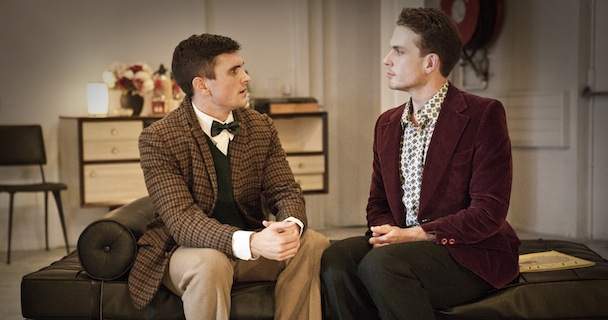The Paris Letter
A lesson in prioritising love over fear, c/o unliberated 1960s America.
Overview
Witnessing the candid demise of Sandy Sonnenberg is painful; the once wide-eyed, nervous yet poetic Jew boy from Princeton has turned slobbering, self-hating squatter in a Paris warehouse. Sandy has been driven thus not by anyone but himself.
Echoing Harvey Milk themes of the marginalisation and shame surrounding homosexuality in America in the 1960s, Jon Robin Baitz's The Paris Letter brings this anxiety back to life in full colour, despite the austere chocolate-box set and thin-spread cast of five over nine roles.
Young Sandy (Caleb Alloway) attempts to suppress his true identity by seeking pop-psychiatric help from Dr Schiffler (Nicholas Papademetriou), who tells him he needs to change the way he thinks about the pleasure-pain factor and this will solve all his problems. Ironically, mature-age Sandy is played by the same actor, Nicholas Papademetriou, a rather telling casting choice.
We are guided in this romp through the auspices of time by the silver fox narrator, Anton (Peter Cousens), clad in a kitsch suit with a matching peach shirt and socks and a rose in his pocket, who delivers sad truths with a smile and glittering eyes. He then resigns to side stage in order to observe the action between young Anton and Bert (Damian Sommerlad), who both parade their sculpted bodies, embrace violently and masterfully exchange punchy Brooklyn chitchat with young Sandy's wife (Susie Lindeman).
But while The Paris Letter is a dialogue about gay pride, it is also about prioritising love over fear. It says that real love, whether it was shared all your life or only between November 1962 to February 1963, should be dealt with honestly because it has the potential to affect your life's trajectory. Even how it concludes itself.





